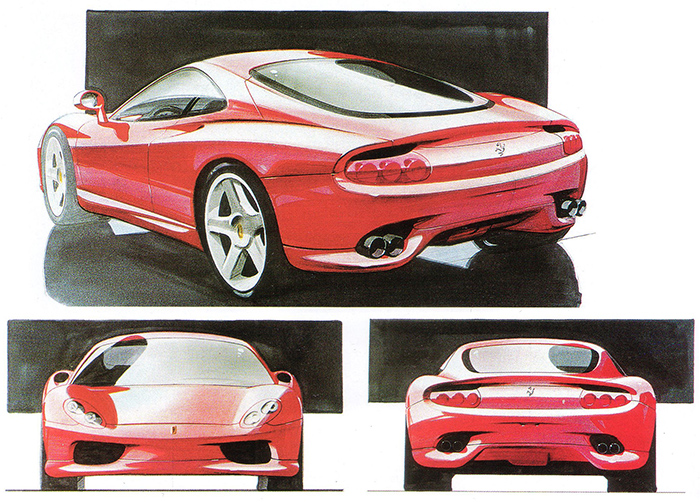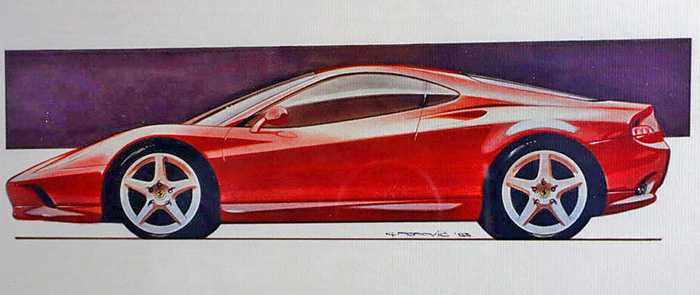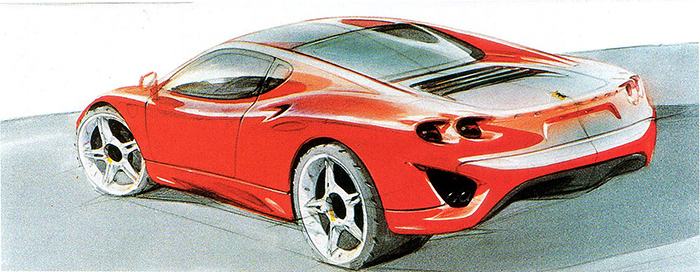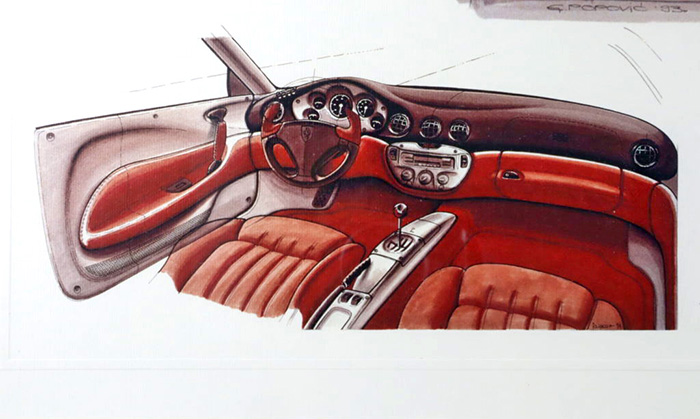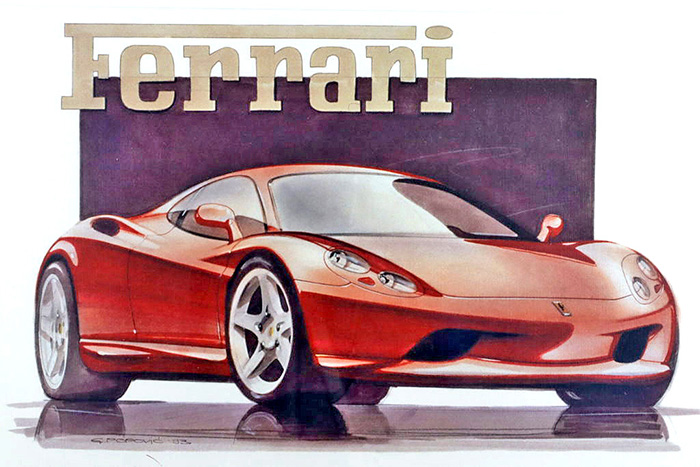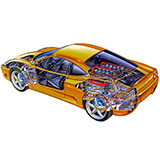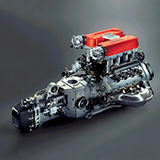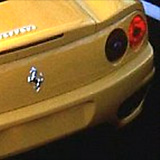The design
Ferrari partnered with Alcoa to produce an entirely new all-aluminium space-frame chassis that was 40% stiffer than its predecessor's which had utilized steel. The design was 28% lighter despite a 10% increase in overall dimensions. Along with a lightweight frame the new Pininfarina body styling deviated from traditions of the previous decade's sharp angles and flip-up headlights. The new V8 engine utilises a 3.6-litre capacity, a flat-plane crankshaft, and titanium connecting rods. The engine generates a power output of 400 PS (294 kW; 395 hp). According to Ferrari, weight was reduced by 60 kg (130 lb) and the 0 to 100 km/h (62 mph) acceleration time improved from 4.7 to 4.5 seconds.
The first model to be produced was the 360 Modena, followed later by the 360 Spider and a special edition, the Challenge Stradale. The Challenge Stradale was the high-performance road-legal version of the 360 produced by the factory, featuring carbon ceramic brakes (from the Enzo), track-tuned suspension, aerodynamic gains, weight reduction, power improvements and revised gearbox software among its track-focused brief. There were 8,800 Modenas and 7,565 Spiders produced worldwide. There were 4,199 built for the US market—1,810 Modenas (coupes) and 2,389 Spiders (convertibles). Of those numbers, there were only 469 Modenas and 670 Spiders that were produced with a gated 6-speed manual transmission as opposed to the "F1" single-clutch automated manual transmission.
In addition to this were the low-volume factory race cars and a one-off Barchetta variant. The race cars were all derived from the 360 Modena and for the first time produced as a separate model in their own right (compared to being a retrofit kit in previous years). While the Barchetta was based on the Spider variant. The first race car was the 360 Modena Challenge, used in a one-make series; the factory-built racing cars were prepared by the official tuner, Michelotto, who also developed the 360 N-GT. The N-GT was a 360 Challenge car evolved even further to compete in the FIA N-GT racing class alongside other marques such as Porsche.
Ferrari 360 Modena specification
Dimensions
-
Overall: length 4,477 mm (176.3 in)
-
Overall: width 1,922 mm (75.7 in)
-
Height: 1,235 mm (48.6 in)
-
Wheelbase: 2,600 mm (102.4 in)
-
Front track: 1,669 mm (65.7 in)
-
Rear track: 1,617 mm (63.7 in)
-
Weight: 1,350 kg (2,976 lb)
-
Curb weight: 1,553 kg (3,424 lb)
-
Weight distribution: 42/58% front/rear
-
Fuel capacity: 95 L (25 US gal; 21 imp gal)
Specifications (Modena and Spider)
Engine
The Tipo F131 V8 engine
- Type: 90° V8 F1310-00
- Bore & stroke: 85 mm × 79 mm (3.35 in × 3.11 in)
- Total displacement: 3,586 cc (3.6 L; 218.8 cu in)
- Redline: 8,500 rpm
- Maximum power: 400 PS (294 kW; 395 hp) at 8,500 rpm
- Maximum torque: 373 N⋅m (275 lb⋅ft) at 4,750 rpm
Performance
- Top speed: Redline limited - 282 km/h (175 mph) / Manufacturer claim - 295 km/h (183 mph)
- Lift-to-drag ratio: -0.73:1
- Acceleration:
- 0-60 km/h (37 mph): 2.47 seconds
- 0-97 km/h (60 mph): 4.6 second
- 0-100 km/h (62 mph): 4.98 seconds
- 0-120 km/h (74.5 mph): 6.79 seconds
- 0-160 km/h (100 mph): 11.1 seconds / 11.7 seconds
- 0-210 km/h (130 mph): 21.9 seconds
- Standing 1⁄4 mile (402 m): 13.1–13.2 seconds at 170.6–177.0 km/h (106–110 mph)
- Standing kilometer: 23.74 seconds
- Braking: 110 km/h (70 mph)-0 mph: 165–175 ft (50–53 m)
- Lateral acceleration: 0.90
- Speed through 600 ft (180 m) slalom: 111.0 km/h (69.0 mph)
- EPA fuel economy:
- City: 10 mpg‑US (24 L/100 km; 12 mpg‑imp)
- High way: 15 mpg‑US (16 L/100 km; 18 mpg‑imp)
- Combined: 11 mpg‑US (21 L/100 km; 13 mpg‑imp)
- Est. range:
- City: 250 mi (400 km)
- High way: 375 mi (604 km)
